A Q&A with Nathalie Alonso and John Parra, Creators of ¡VIVA VALENZUELA!
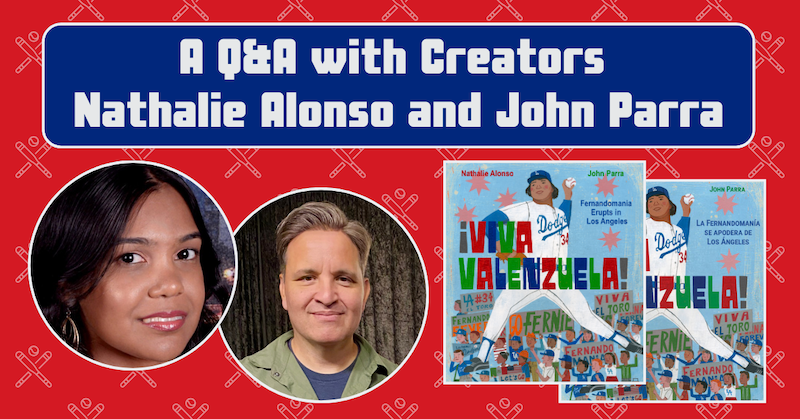
Coming in March 2026, ¡Viva Valenzuela! is a vibrant new baseball book for readers ages 7–10 that shines a spotlight on Latino sports history. Written by award-winning baseball reporter Nathalie Alonso and brought to life with bold, expressive artwork by Pura Belpré Honoree John Parra, this picture book tells the story of a sensational rookie pitcher whose distinctive style on the mound made him unforgettable. More than an athlete, Valenzuela became a symbol of Mexican American pride and an inspiration to Latinos everywhere.
We sat down with Nathalie and John to learn more about the story behind the book and what it means to them.
Nathalie, what first inspired you to write ¡Viva Valenzuela!? Why do you think the story will resonate with kids today?
When I first started writing for children, I knew I wanted to draw from my years of experience (19 years at this point) covering Latino ballplayers professionally as a sports journalist for MLB.com. Fernandomania was an obvious choice. I crossed paths with Fernando Valenzuela while covering a postseason series at Dodger Stadium in 2017. He came and sat down with Mike Brito (the scout who discovered him and a legend in baseball circles) at the same table in the press box cafeteria where I was working. I don’t get starstruck often, but I was very, very starstruck when I realized who I was sitting across from. So that encounter was on my mind. I think it will resonate because kids love a sports hero, especially one who looks like them. I think they’ll appreciate the reminder that their heroes are very much human and deal with a lot of the same things they do.
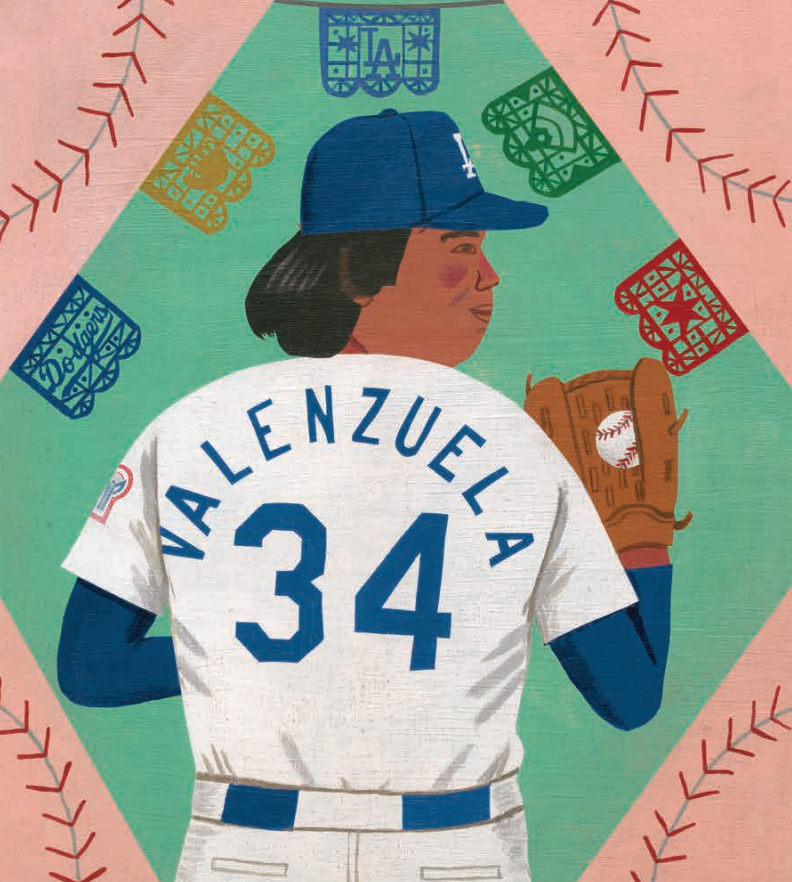
John, what was your vision for capturing the excitement of “Fernandomania” in your illustrations?
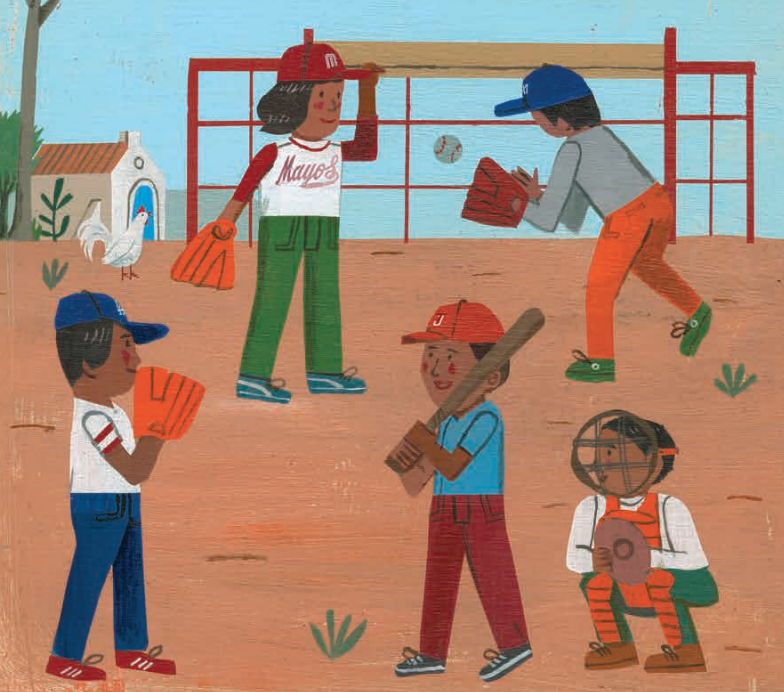
Nathalie’s work immediately transported me back to those years as a young Chicano kid growing up in Southern California during Fernandomania. I wanted to capture that same sense of wonder and excitement I felt as a kid. To do that, I visually worked to blend my traditional children’s book technique with a graphic novel/comic book style, adding elements of Latino family culture and sensibility. The result has a slightly more mature tone compared to my other children’s books, but it still holds on to that youthful energy and passion that defined the era.
Nathalie, what was the most surprising thing you discovered while researching Valenzuela’s career or life?
This didn’t make it into the book (writers always have to leave good material on the proverbial cutting-room floor), but while interviewing some of Fernando’s former teammates for an MLB.com story marking the 40th anniversary of Fernandomania, I learned he was quite the prankster. He would walk around with a lasso and snag his teammates. Even though he didn’t speak much English, he still managed to build strong bonds in the clubhouse. I always knew how much Latino baseball fans adored him, but I hadn’t fully appreciated just how much his teammates enjoyed being around him as well.

John, share a bit about your research process when creating your art for the book. Did you look at old photos, game footage, or memorabilia to bring Valenzuela’s era to life?
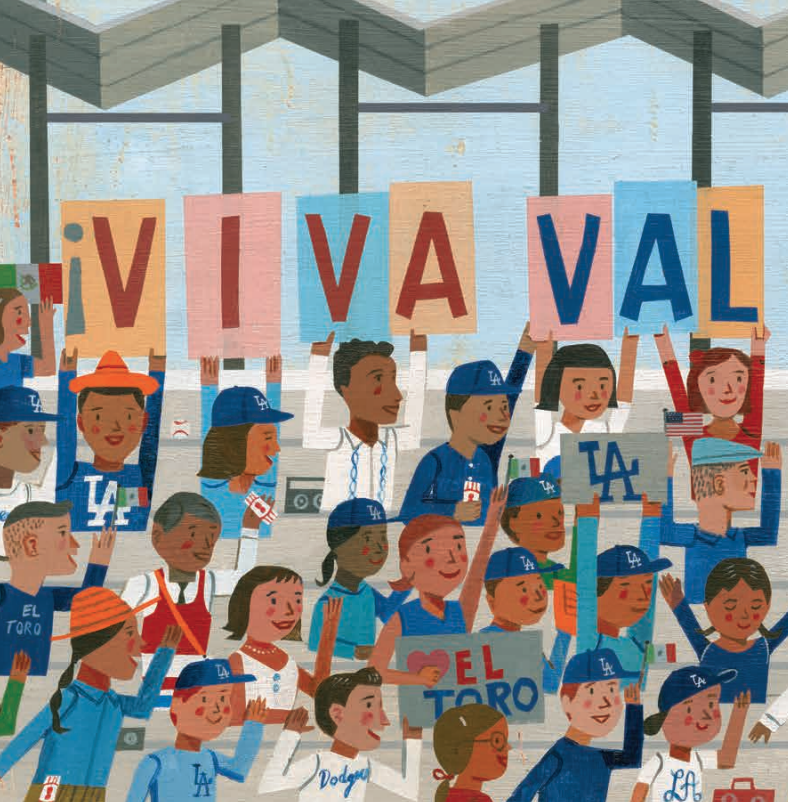
The research for this book was as thorough and immersive as I could make it. My dad was a lifelong baseball fan who knew the game inside and out, and he passed that passion—and appreciation for the little details—on to me. I wanted to honor that legacy, and the dedication of Dodger fans, by getting everything just right. I poured over game footage and gathered countless photos from the 1981 Dodgers season. I studied pitch selections, batting orders, jersey logos and numbers, umpire uniforms, vendor outfits—even the scoreboard, stadium lighting, and outfield wall markers. Every detail mattered. I wanted to fully capture the feeling and authenticity of that exact time and place.
John, your artwork often celebrates Latino culture—what felt special about illustrating this particular story? How does Valenzuela’s story connect with you personally?
Fernando wasn’t just another athlete to admire—he was a reflection of me, of us, in the Latino community. He looked like me. He came from humble beginnings, just like so many of our families. His rise wasn’t just his own; it felt like all of ours. Illustrating this story was deeply personal because Fernando represented possibility—he showed me that someone with my background and culture could achieve greatness. He gave me the courage to dream bigger, and through this project, I felt connected to a larger community of Latino/a/x fans who shared that same pride and inspiration. That made this story feel incredibly special to tell.”
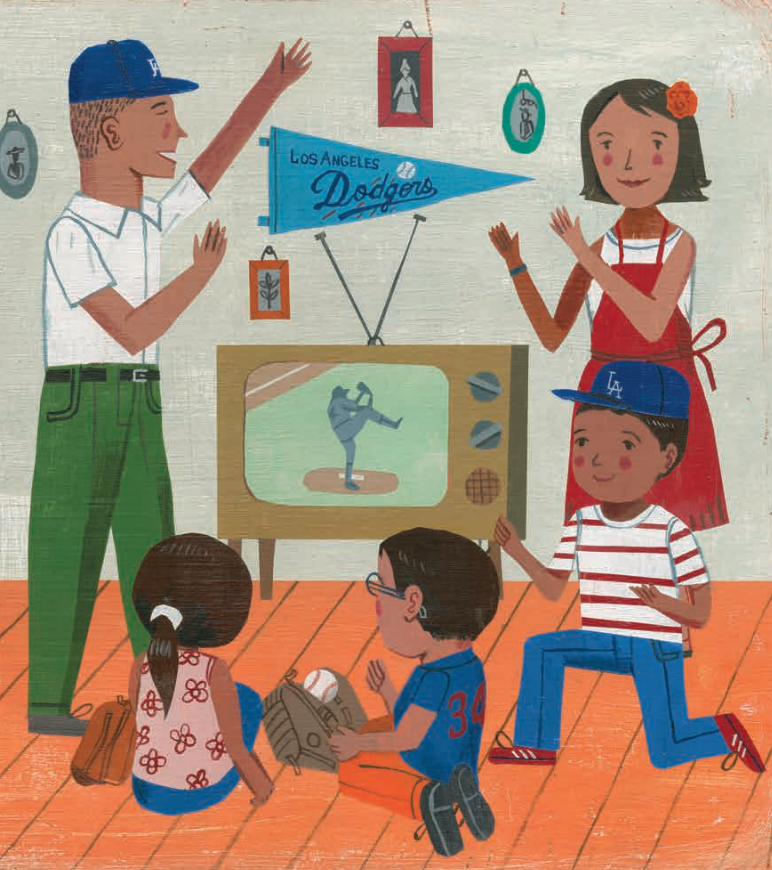
Nathalie, Valenzuela was a groundbreaking figure for both baseball and Latino representation. How did you balance telling a sports story with telling a cultural story?
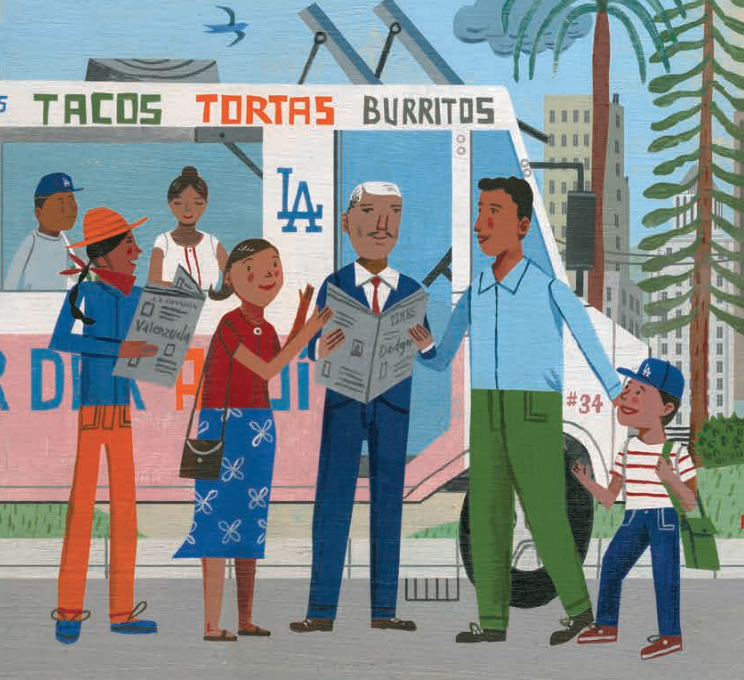
What drew me to Fernandomania in the first place is that it isn’t just a sports story. There are plenty of great sports stories, but what makes Fernando’s achievements worthy of a book, in my view, is how he transformed Dodgers baseball by bringing in Mexican and Latino communities. He was the perfect person, with the perfect team, in the perfect place. Of course, I wanted to capture what made Fernando special on the field—everything about him was unique, from his delivery to his screwball, and none of it was expected. And while that’s a fun story, it was just as important to show how people who had been excluded from baseball responded to his success, because that reaction of people feeling seen and represented is what made him a cultural icon. It’s what makes Fernando’s story more than just a cool bit of baseball history.
How do you both see Valenzuela’s legacy continuing to inspire new generations?
John Parra: Fernando Valenzuela’s legacy continues to serve as a powerful lesson for new generations. More than an athlete, he proved that someone could rise to greatness and inspire millions. His story still resonates today, reminding young athletes that success isn’t just about talent, but also about heart, humility, and pride in where you come from. His journey paves the way for the next generation to dream big, break barriers, and lead with dignity and class.
Nathalie Alonso: In 2021, I workshopped this manuscript virtually at the Highlights Foundation’s Summer Camp in Nonfiction. That’s where I met a fellow writer named Gloria Day. After reading my manuscript, she said something along the lines of, “This story is about the magic that happens when you just show up and be yourself.” I’ve thought about that ever since. That’s really what I hope new generations take from Fernando’s story. He became a transformative figure simply by being who he was. He wasn’t trying to be a hero—he just showed up, did his thing, and never changed himself to conform. To me, the idea that you don’t need to change who you are to do great things is an incredibly powerful takeaway for anyone of any age.
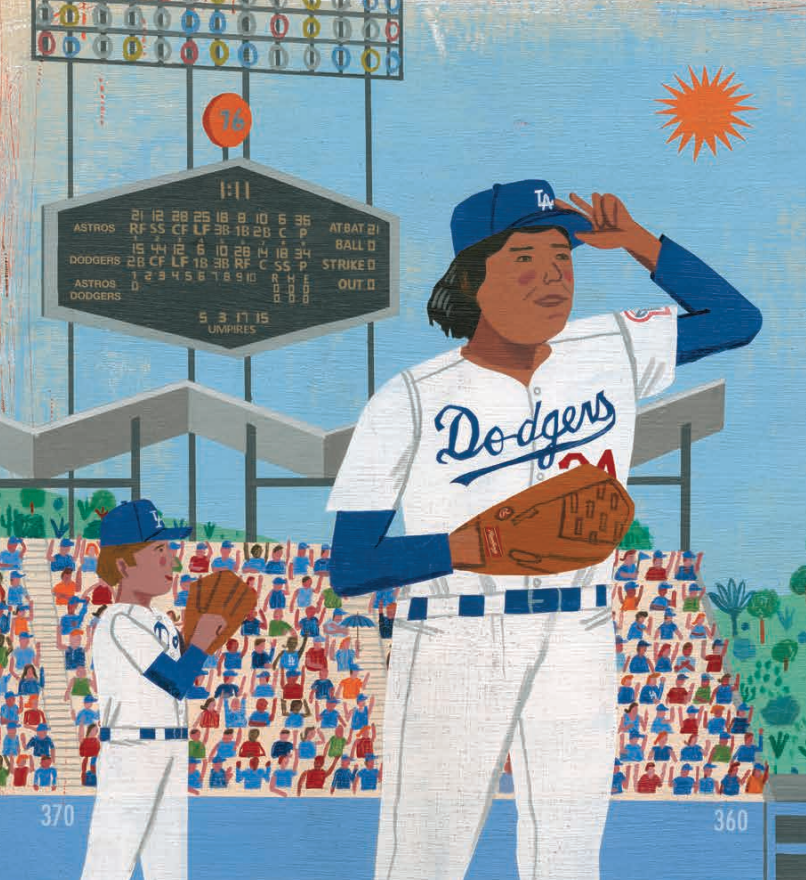
What do you hope families will talk about after reading ¡Viva Valenzuela! together?
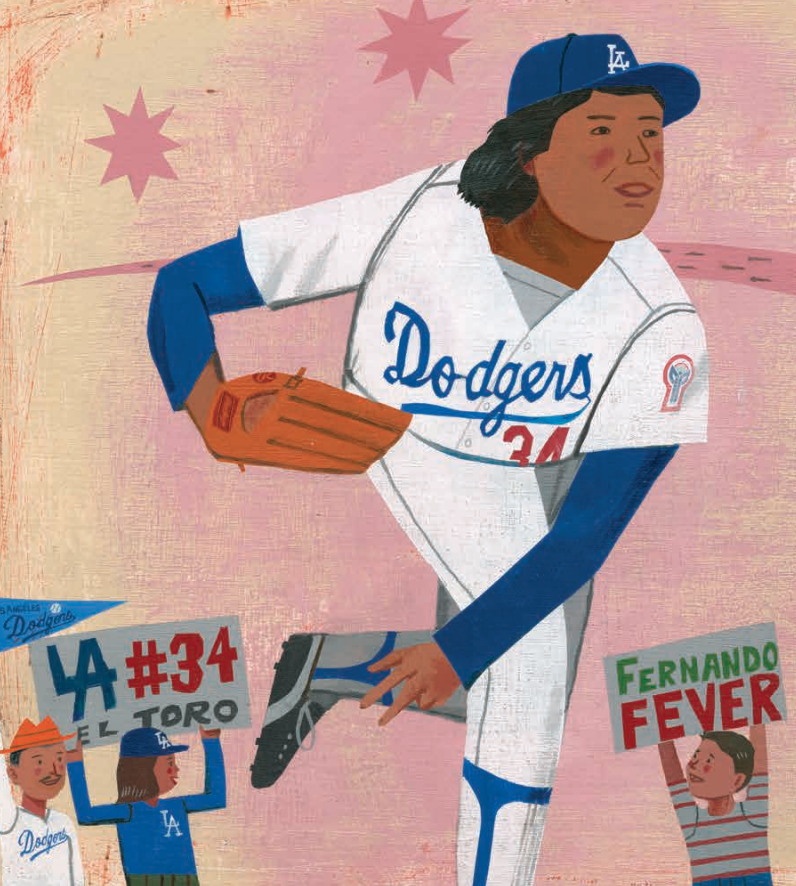
Nathalie Alonso: I hope this book serves as a springboard for Latino parents and grandparents and aunts and uncles and cousins to share their memories of Fernando Valenzuela and Fernandomania with the children in their lives. Like many readers who will pick up this book, I wasn’t around when Fernando came on the scene, but I was still able to learn and appreciate his story because it’s so well documented. This book adds to that documentation in a way that’s accessible to young people, and I’m excited about that, but I ultimately think that what will keep Fernando’s legacy alive forever is the personal stories that will be passed down from one generation to the next. I hope this book makes children eager to listen to and cherish those memories.
John Parra: I hope families walk away talking about more than just baseball—I hope they talk about pride, perseverance, and the power of representation. His story is a reminder that one person can spark a movement and bring a whole community together. As a lifelong Dodger’s fan, I wear his #34 jersey to every Dodger game. It’s more than just a piece of clothing—it’s a piece of history, a symbol of joy, and a connection to a legacy that lives on in the hearts of fans everywhere.
Coming March, 2026!


